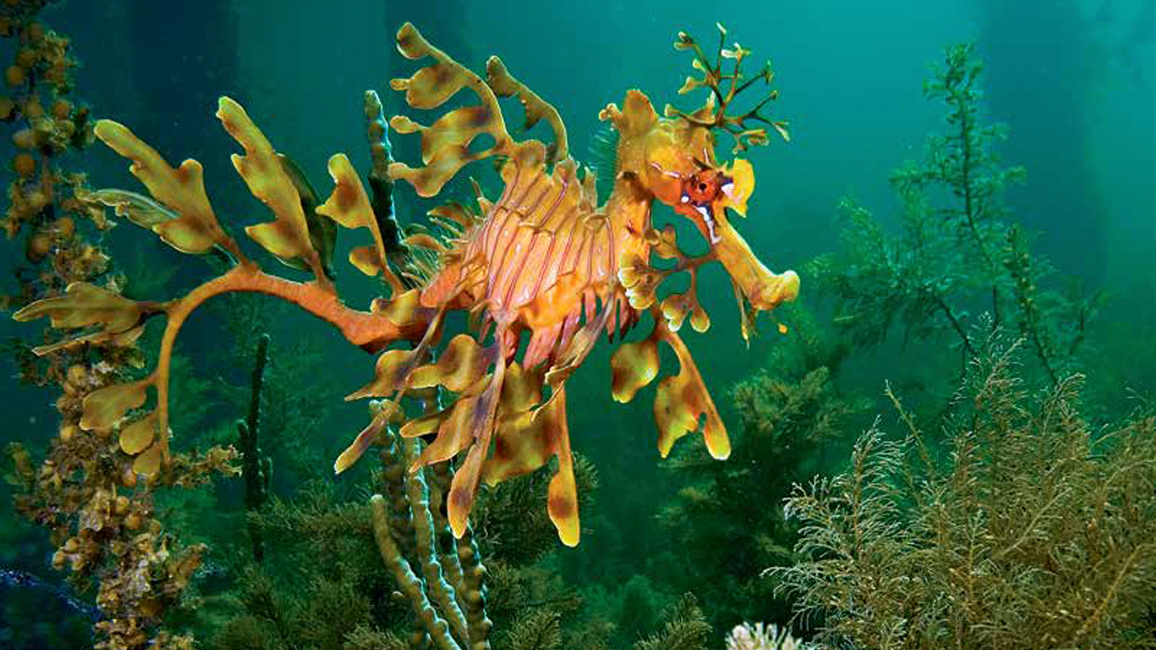
Stranger than Fiction
By Gerry BishopYou can’t make this stuff up, it’s so strange. Meet 10 animals that are almost too weird to believe. You’ll discover that for these—and many other—creatures, “weird” is a wonderful way to be!
1. FLOWER MANTIS
Imagine this: You’re a hungry African bird looking for a big, juicy bug. You spot something sitting on a flower, so you fly over to get a closer look. You take a quick peck—just to see what happens. Suddenly, that tempting tidbit jumps up! It spreads its front legs and wings and shows its bright colors. WHOA! Easy prey? No way! You’re outta there! You’ve just been startled by a giant devil’s flower mantis.
2. YETI CRAB
Scientists discovered this strange-looking crab deep in the Pacific Ocean. They thought those long, hairy claws looked like the arms of Yeti, the “abominable snowman.” Why would a crab have hairy claws? Well, a yeti crabis blind, so maybe these hairs act as “feelers” for getting around. Also, the hairs collect loads of bacteria. Maybe the crab uses the bacteria for food. Scientists don’t really know yet-i.
3. BIRD OF PARADISE
Many male birds prance and dance around to win a mate. But on the far-off island of New Guinea, the superb bird of paradise outperforms them all. At the beginning of his dance, he looks like any other black bird. But then he spreads out a shield of shiny blue breast feathers and special black feathers behind his head to transform himself. One second he’s a bird, and the next, he looks like a black-and-blue smiley face! What female could say no to that?
4. LEAFY SEA DRAGON
Somewhere along the southern coast of Australia, a sea dragon waits among some seaweed. Leaf-like growths cover its body, blending it in almost perfectly. There it hides, ready to slurp up tiny creatures with its long, sucking snout. When the sea dragon wants to move on to a new place, it just floats away on the ocean current—looking like any old piece of drifting seaweed.
5. NAKED MOLE RATS
Hairless rats that live underground as moles do? Yes, and that’s not all! These African rodents use their long front teeth to dig miles of tunnels in search of food. Naked mole rats are mammals, but they act more the way bees and termites do. They live in colonies, where a single queen gives birth to all the young. Up to 200 workers dig tunnels and guard the colony.
6. TREEHOPPERS
Has nature gone crazy? Seems so by the looks of the “headdress” on this Brazilian treehopper. So, what are all those strange balls and spines for? No one really knows. Perhaps they help keep birds and other predators from taking a bite. After all, who’d want a mouthful of that?
7. THORNY DEVIL
Speaking of a mouthful, many predators would surely think twice about munching on this spiny little lizard. Thorny devils move slowly across the desert sands of Australia, disguised by the color of their skin. But when one is threatened, it arches up its tail and ducks its head. If a predator decides to take a bite, it might go for the fake head located behind the real one.
8. SAIGA
What’s with the lumpy, droopy nose on that saiga (SY-guh)? In two words: air control. In summer, herds of these antelopes migrate across the dry plains of central Asia, kicking up clouds of choking dust. As the animals inhale, the dusty air passes through mazes of tiny passageways inside their noses. Hairs and sticky mucus hold on to the dust, making the air clean enough to breathe. In winter, these noses warm up the air that is breathed, protecting the saigas’ lungs from the bitter cold.
9. FLAMINGO
A flamingo eats with its head upside down! Inside its curved bill are rows of what look like hair combs. When feeding, the flamingo opens its bill and scoops up water. (The water is full of tiny plants and animals—the flamingo’s food.) Its large tongue pushes the water through the “combs” and out the sides of the bill. The tiny bits of food get caught by the combs, and the flamingo swallows them.
10. TARSIER
WOW! What big eyes this Philippine tarsier (TAR-seeur) has! Just one of its eyes is bigger than its whole brain—and for good reason: These tiny creatures of the Philippine Islands hunt in the darkness of night. Those huge eyes can easily take in what little light there is. And that allows a tarsier to leap through trees and spot insects and other prey as if it were daytime.
“Stranger than Fiction” originally appeared in the September 2014 issue of Ranger Rick magazine.
(Click on each image above for a closer view of the story.)



















